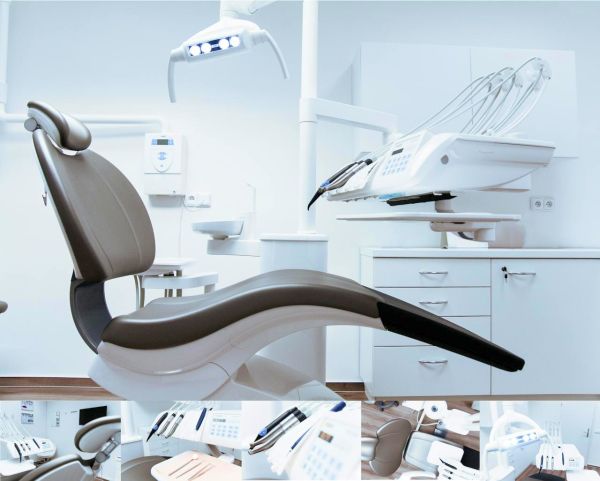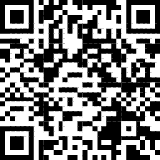Here's How Doctors Can Ensure That They Are Using The Latest Equipment
- Details
- Written by Lauren Perry
- Views: 15937

As a doctor, you must comprehend the rapid change in medical technology. The most recent tools apparently become outdated at an escalating rate. Modernizing with the latest equipment not only enhances your treatment practices, but also ensures that your practice is in line with the current safety and quality standards.
By continuing to use outdated instruments you risk losing the reputation of your patients and yourself. Nevertheless, it does not require a herculean effort to be ahead. So, let's dissect the specific strategies to assist in negotiating these issues.
Conduct Regular Equipment Audits and Needs Assessments
Your audit should start with an audit of the devices and tools that you have at your workplace or health clinic. Write an account of what is available, the latest update, and how effectively it performs its task. Use a universal naming strategy, say Global Medical Device Nomenclature (GMDN), to organize and trace them. For example, if you're using widely adopted brands like GE medical equipment, make a note of their performance and update the status during the audit. Using the developed list, answer the following: Do your clinical needs get fulfilled right away? Do you stumble upon slow devices? Are there possibly unreliable tools or those that are no longer up-to-date? Are there missing abilities that could largely influence a patient's healing process? Identify areas of problems in advance, avoid anything that makes working difficult, and move on to design corrections or improvements.
Prioritize Risk-Based Maintenance and Lifecycle Management
Rather than waiting until your medical equipment stops working, it will be more prudent to keep abreast of the maintenance requirements of the tools. Your main concern should be the maintenance of tools such as life-critical ventilators and defibrillators, as they are crucial to the survival of a patient. It is prudent to have a schedule that involves inspection, order, calibration, and efficacy. Having a neat record of all these activities will make it easier to follow up on the same and provide early warning signs of any problems. Do not also forget about the estimated service life of every machine; build replacements into the schedule as the machine reaches the end of the shelf life. This conscious effort will increase the reliability and safety of your equipment.
Follow Regulatory and Vendor Update Protocols
To stay abreast of the new devices, you have to monitor the changes implemented by the regulators and vendors. Be on the watch for any new regulations your government or other agencies, such as the FDA, may bring forth concerning product updates, digital security, and personal safety. It can be useful to subscribe to news alerts by these bodies. In addition, vendors usually update their products, so make sure that these patches are installed properly and at the right time. If you are a buyer, then make sure that your contracts support these updates. In this manner, your equipment will be up-to-date and completely compliant.
Integrate Cybersecurity and IoMT Security Best Practices
Nowadays, medical equipment is no longer purely mechanical, but it is digital too. Such devices are prone to cyber-attacks since they are prone to network connections. To ensure the security of patient information and the integrity of the system, you should liaise with your IT squad to conduct periodic security checks. You should restrict access to authorized people and keep medical devices on a separate network from other systems. Be prompt to take action on update notifications, especially those that fix the prevailing security bugs. You should also tell your staff to really observe the indicators of hacking or cyberattacks. When you adhere to sound cybersecurity practices, you reduce exposure to data breaches.
Engage Stakeholders and Train Clinical Staff
Keeping the equipment up to date is not only a matter of acquiring new equipment. It is also necessary to involve pertinent people. Encourage physicians, nurses, biomedical engineers, and procurement teams to share their ideas of what is going well and what is not going well. Their ideas help you choose equipment that is exactly tailored to your workflow and patient needs. When introducing new devices, make sure that you leave enough time to train everyone who has to work or maintain the equipment. Encourage your staff to raise concerns and offer recommendations. Communication leads to trust and ensures that any issues are caught early before they blow out of proportion and ensure that significant improvements are timely made.
Conclusion
It does not always have to be difficult to keep up to date with modern medical equipment. Keeping your equipment well monitored, staying on top of the changes and maintaining your tools and ensuring that there are not many issues, you will be able to establish a safe and effective healthcare environment. Such measures would not only help in increasing your confidence as a doctor, but also it would make your patients feel safe in that they are dealing with a professional in the field. Although the medical tech sphere is dynamic and quick-moving, with proper plans and proactive approach, you will be able to adapt to the changes and provide the most appropriate care every time.
This article is written exclusively by Lauren Perry for CrystalWind.ca.
Disclaimer:
This article was submitted by a writer sponsored by a third party. CrystalWind.ca is not affiliated with the sponsor and receives no payment. This content is for informational purposes only and not medical advice. Consult a healthcare professional before making health decisions.
© 2025 CrystalWind.ca & Author | All Rights Reserved | No reproduction without permission | Awakening Souls Since 2008.
#CrystalWind #SpiritualJourney
Liked this article? Dive deeper into personal growth and wellness! Check out CrystalWind.ca for spiritual wisdom or explore AromaWorx.ca for natural well-being tips. Spread the positivity—share this with friends on their happiness journey!
Let’s Chat! Drop Your Thoughts Below! ![]()
Disclaimer Health
All post and information provided within this blog is for educational and informational purposes only, and is not to be construed as medical advice or instruction. No action should be taken solely on the contents of this website. Please consult with your healthcare professional before making any dietary or lifestyle changes or taking supplements that may interfere with medications. Any products or information discussed are not intended to diagnose, prevent, treat or cure any illness, disease or lifestyle. Please consult your physician or a qualified health professional on any matters regarding your health and wellbeing or on any opinions expressed within this website.
Latest Articles
Dive into the Mystical World of the Crystal Wind Oracle Deck!
Get All the Enchanting Details Now!
NEW Expanded Boxed Edition!
Now with 58 Cards for Richer Wisdom!

Imagine a world of inspiration and healing, free for all—made possible by YOU!
Donate Now—Ignite the Magic at CrystalWind.ca!

Epilepsy - Finding A Cure
Your donation can make a difference!
Help us find a cure – donate now!
Unlock Your Light: Join Lightworkers Worldwide on CrystalWind.ca!
Follow Us!
Featured This Month
Sun in Virgo
An Overview of Sun Sign Characteristics for Virgo Virgo is guided by Mercur... Read more
Mabon Magic: Ideas For Fall Decoration And R…
Welcome (almost!) to Fall! We’re turning the Great Wheel once again, toward ... Read more
Virgo Mythology
The Virgo Myth In all of constellation mythology, few legends are as misund... Read more
Mabon in Modern Times: Fresh Takes on the Au…
The Mabon season begins somewhere around the 21st-22nd of September and cont... Read more
Peridot: The Healer's Stone
Peridot has been used as a Power Stone for centuries. Peridot fosters emotio... Read more
Watermelon Tourmaline
Synonym: Rainbow Tourmaline The watermelon tourmaline is a rare variety t... Read more
Crystals for Virgo
As the warmth of summer begins to soften into the crispness of autumn, the Sun... Read more
The Vine: September 2nd - September 29th
The Autumnal Equinox ( Alban Elfed ) Celtic Symbol : The White Swan Read more
Sweet Violet
Sweet Violet Faithfulness and modesty. “I will always be true to you.” Helps... Read more
































































































































































